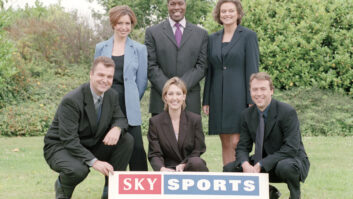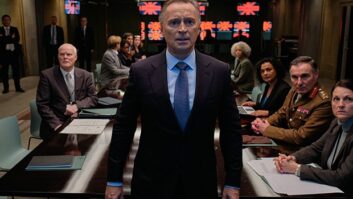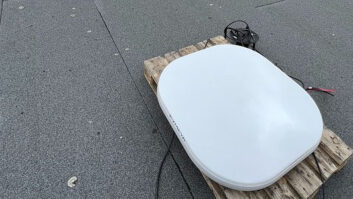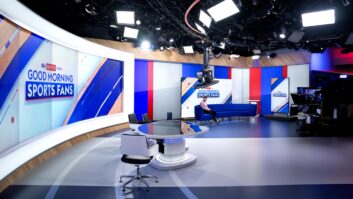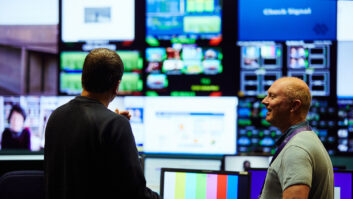On Friday 15th May, Sky News became the first news broadcaster to go fully remote. Life After Lockdown, a half-hour show hosted by Sarah-Jane Mee, was broadcast with every contributor and every member of the production team working from home.
The live broadcast was the culmination of a project the team at Sky News had been working on since the government first introduced lockdown measures in the UK. “Sky’s been quite ahead of the game in terms of remote working,” Ben Wickham, head of studio output, tells TVBEurope.
“Sky News is the rolling 24 hour news station that encompasses all the live sources that we do and so it’s proven quite difficult to take it fully remote, the way that other TV channels have been able to,” he continues. “It’s something that we’ve worked on in conjunction with the rest of our production services, who have actually done similar programmes on Sky Sports channels and on Sky Sports News. We’ve taken what they’ve done and we’ve tried to do a little bit more with the technology. The reason why we’ve done it now is because this is the culmination of we’ve been working on over the last few weeks, and we’re in a place where we think we can launch what we consider to be a premium output.”
Viewers saw host Sarah-Jane Mee on air with Sky’s economics editor Ed Conway, diplomatic editor Dominic Waghorn, Tamara Cohen from the politics team and David Nabarro, the World Health Organisation’s global envoy for Covid-19. They were joined by guests from around the world who appeared on air via Zoom.
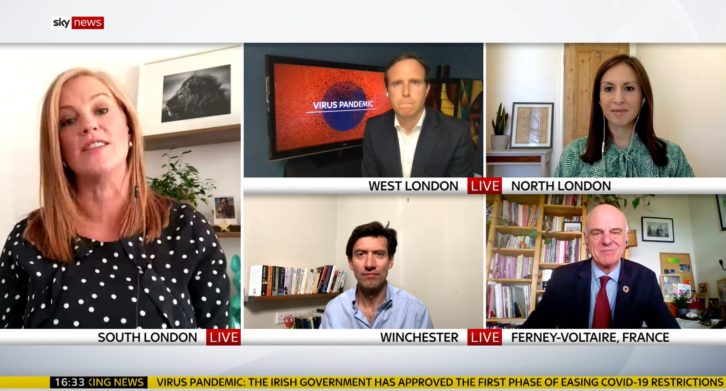
In terms of the gallery team, producer Nick Stylianou was in Stockwell, director James Whicher worked from home in Camberley, Wickham worked as a back-up director, keeping across all the feed in case anyone’s internet dropped out, and Kevin Donaldson, another member of Wickham’s team, managed the Zoom calls.
“We used vMix, which is a third party platform and it’s essentially a gallery in a box,” explains Wickham. “You can build your own sources and inputs. We put it on an Amazon Web server, so we remote into that Amazon Web server using a Teradici client, which is set up at James Whicher’s home. That handles all of the IP, most of the audio and he can cut, mix and all that kind of thing. He then created a web page within the vMix software which we used for talkback and to run VT. We all had access so it was kind of a virtual vision and sound mix at the same time. We also kept in contact with each other and the Osterley operation via our own Riedel talkback system, we used the iOS app and had it running on iPads.”
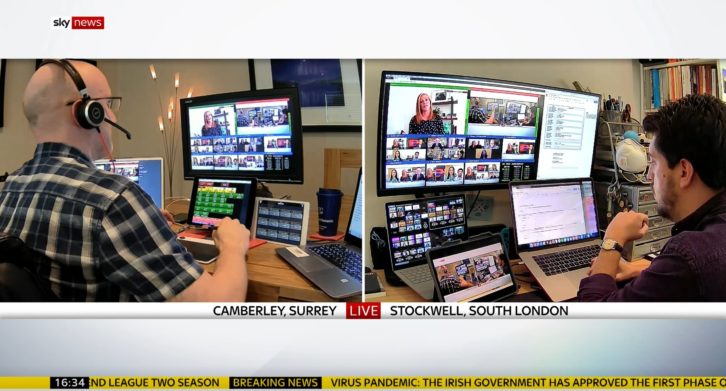
While some of the technology has been used by Sky Sports for their Cricket Watchalong, Wickham believes the broadcast was a world first for a news programme. “We certainly had more content, we were running VT, graphics sequences, all from within the streaming software,” he explains.
Obviously there was lots of testing before the production team were given the green light for the show to go to air. Wickham says the team had been working on putting everything together for about three weeks. “That was off the back of the work that Sky production services have already done. But what we were trying to do was the virtual gallery. We had a PCI in the Cloud. That didn’t exist two weeks ago, and so we built that up from scratch. We spent the last week kind of testing all the integrations, testing the Zoom calls, testing the ins and outs of this. We ran a kind of pilot back to Osterley so we could check that they could see it and all the talkbacks were working, and we’ve been popping up for half an hour here and there to make sure the show worked. We ran as many rehearsals as we felt we needed to make sure we’re happy with the technology, but it was still a little bit of a leap in the dark.”
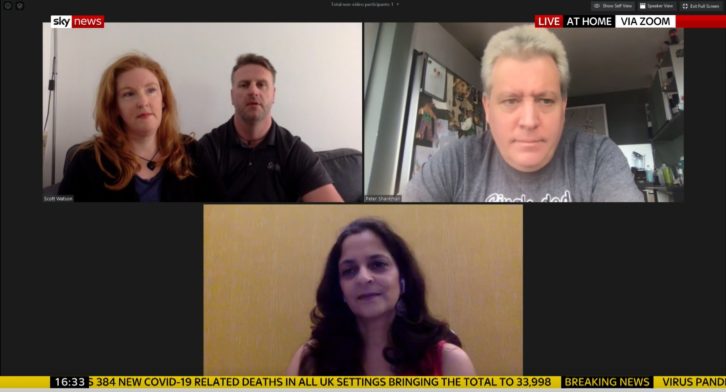
Asked if Sky News is likely to produce more content with a completely remote team, Wickham admits it’s a complex situation. “If we’re very honest, the slightly restricted set-up that something like this remote show has works very well if you have a very static running order, which is something that we don’t have very often in news. So, if I’m being honest, it probably isn’t something we would roll out for long chunks of time. However the ability to spin up remote programmes and create bespoke and premium Sky News content remotely allows us to create events like Life After Lockdown.
“We can produce shows without having to bring people into the studio premises because as much as possible, we’re trying to reduce the amount of people that we have in our newsrooms and in our gallery spaces. So it’s very useful for that,” he concludes.
